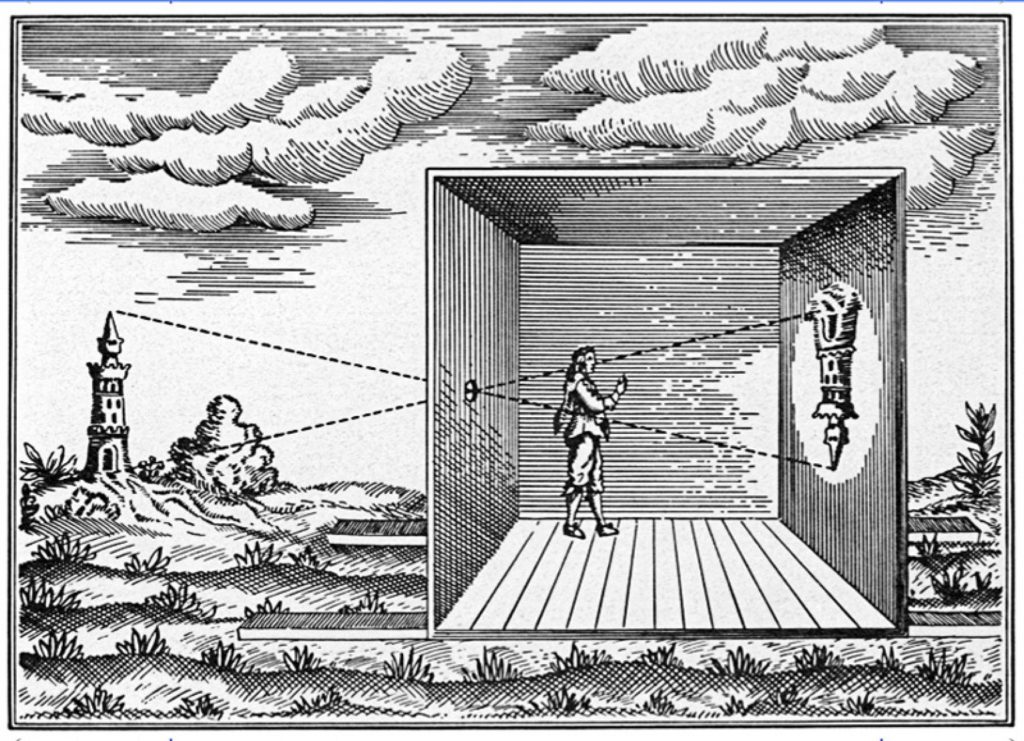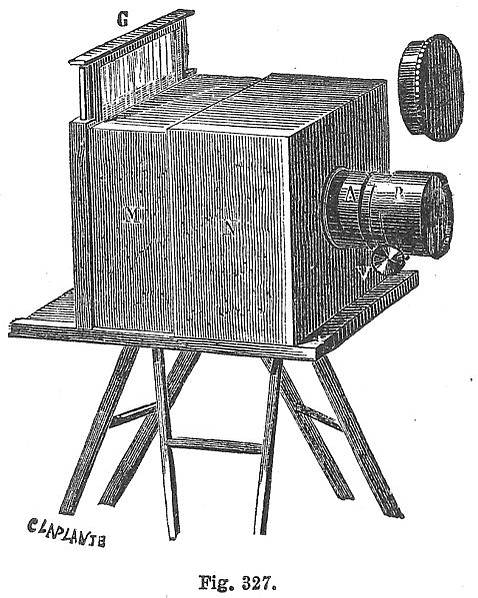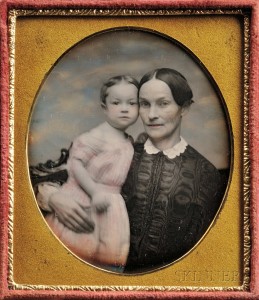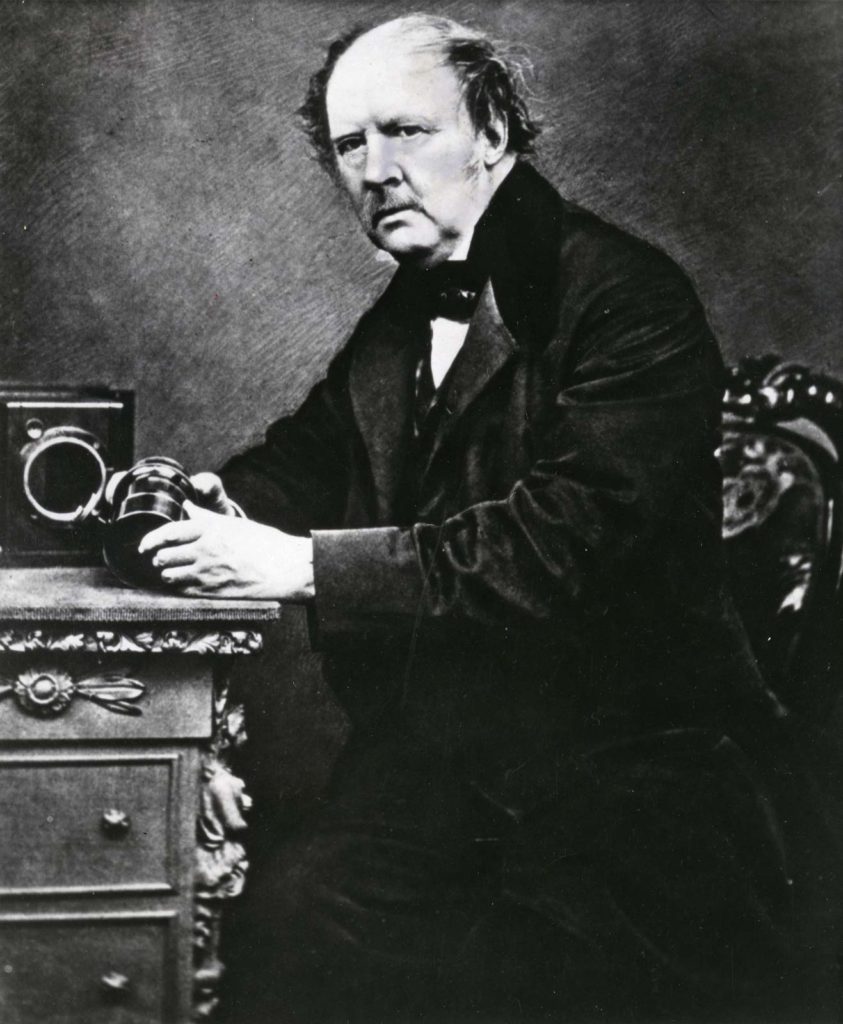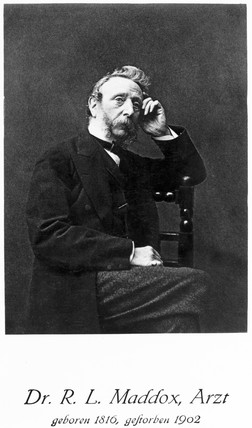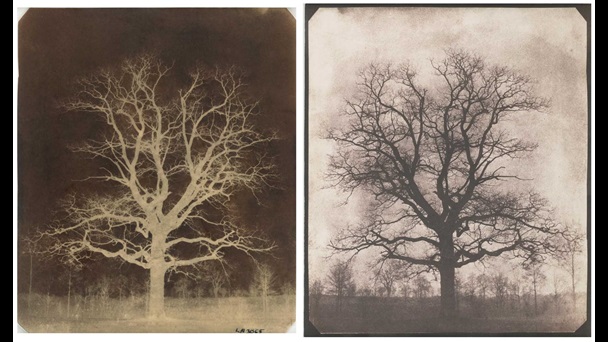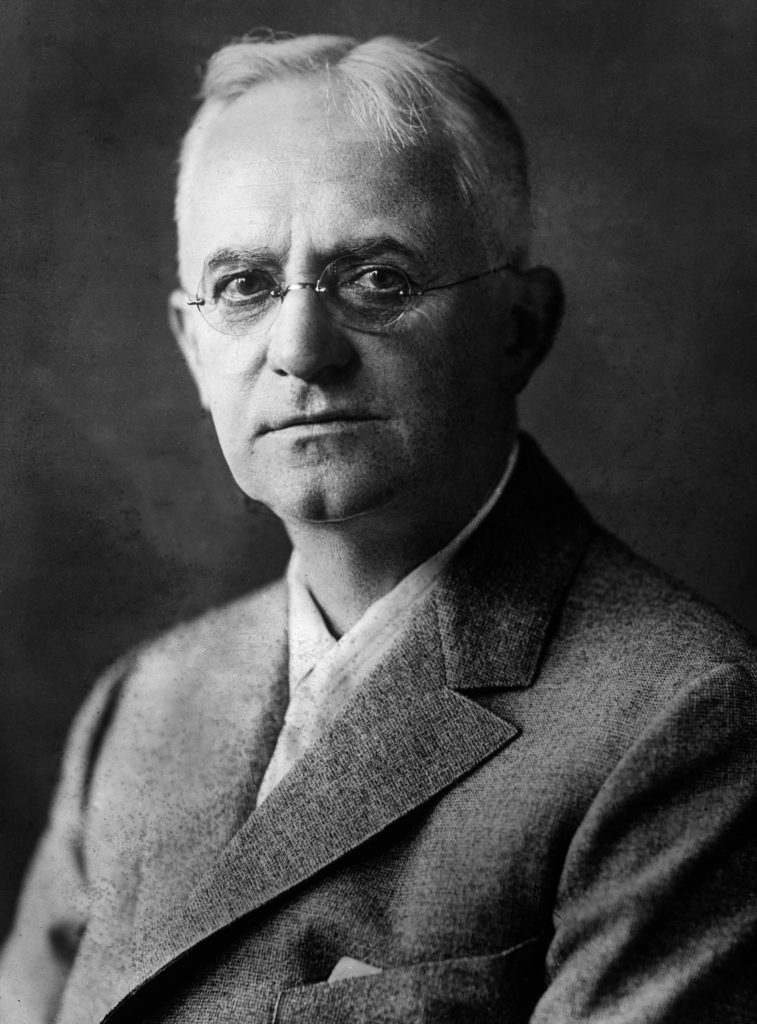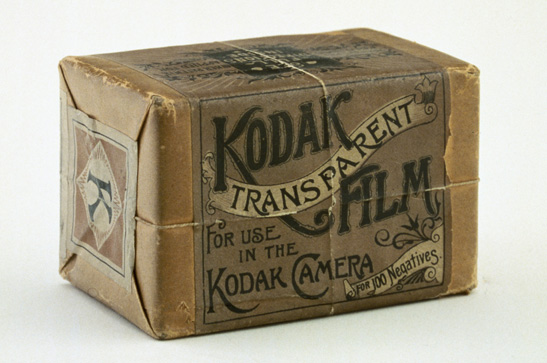The medium of photography is a well known art form, with it now being more accessible than ever, whether it is taking pictures with your phone or using a film camera. Nowadays we consume hundreds of images a day and are able to produce them at ease, however it has taken many scientists, inventors and artists hundreds of years to perfect this process.
The first known method used to capture and present images can be dated back to 400BC. This was known as a Camera Obscura, meaning ‘dark chamber’ in Latin, which was a method that involved creating a completely dark room with one small hole in it. As a result, this created a projection of the image outside the room onto the walls of the dark room upside down. For hundreds of years this was an invention that was used in order to view the eclipse of the sun, without causing damage to the eyes. Although a revolutionary discovery, this method did not allow for the image to be permanently captured. This was an issue many struggled with for years until the late 1820s, when Joseph Nicéphore Niépce, a French inventor, was able to create a camera obscura which was portable and could expose a pewter plate coated with bitumen to the projected image. This made him the first person to record an image that did not fade quickly after it was captured.
Soon after this, the idea of photography was commercialised by Louis Daguerre after his invention of the daguerreotype, a process named after himself, in 1839. With this new form of photography, extremely detailed images were able to be created. This was achieved by using a copper plate with a thin sheet of silver on, which had to be polished enough so that the surface would look like a mirror. After this plate had been transferred to the camera, it was then exposed to light and developed over hot mercury. This meticulous technique and outcome was something only the rich could afford and most of the time was used to create portraits of them. However, even though Daguerre’s invention resulted in beautifully detailed photographs, each image was one of a kind, as it didn’t use negatives, meaning there was no way to make further prints. In addition to this, portraits usually took around three to fifteen minutes to take, meaning a more inexpensive and efficient alternative had to be made.
Leaving a gap in the market, this allowed British Henry Fox-Talbot to solve this problem by inventing the calotype in the 1830s. This is due to the process that required using a sheet of paper coated in silver chloride being exposed to light in a camera obscura. As a result, the places on the paper which had been exposed to light became dark and vice versa, in turn creating a negative image. With this negative, it meant that photographs could be reprinted by contact printing the negative onto another piece of sensitised paper. As well as this, the Calotype allowed for a shorter exposure time as fast as one minute. This method was then improved by English inventor Richard Maddox, who introduced the dry plate in 1871. Using dry plates meant that the plate could be transported and the negative could be exposed and developed at a later date, rather than in the same sitting. All of this caused photography to become slightly more accessible and appealing to the public.
It was not long after until George Eastman invented the roll of film in 1889, revolutionising the way we take photographs. Eastman developed these rolls on a transparent base, a standard that still remains in the present, containing 100 exposures. He named this camera Kodak, a name he coined himself, therefore starting the infamous camera company that still exists today. With this camera users would send the entire thing back to the manufacturer, with the used film inside, which they then developed and sent back with the reloaded camera. This quick and efficient process meant that less people held poses and more candid photographs were taken. This transformed the image of photography into something enjoyable and a way to capture happy memories, with Kodak even encouraging users to smile at the camera. In 1900, eleven years after first introducing the roll of film camera, Eastman distributed the Brownie Camera. This product was originally made for children and priced at one dollar, making photography more accessible than ever. It can be said that Kodak was the start of contemporary photography.

